Your delightful garden is bound to attract some critters like hedgehogs, rabbits, and many others. Based on any potential damage, it’s important to find out who’s been sleeping in your garden – hence this garden animal poo identification guide.
We’ll discuss the size, colour, and texture below. You’ll find out how to distinguish between similar faeces and which animal droppings are nature’s true ironic hipsters.
Table of Contents
Identifying animal poo
Hedgehog Poo
What Does Hedgehog Poo Look Like?
Size: 2-6 cm
Hedgehog poo is the cutest of them all. Really, look at the picture; it looks like a Death Metal ladybug pupa. This shiny, clammy looking poo narrows down to one end.
The hedgehog droppings are black enough to notice some leftover digested food in them. These pieces may be berries or insect legs.
Fox Poo
What Does Fox Poo Look Like?
Size: 6-18 cm
Fox droppings are elongated and slightly warped, plus they have a unique foxy musk. Just like with other wild animals, you can notice leftover foods in the fox poo. If you see small bones, berries, or even traces of fur, you can be pretty sure you’re dealing with a fox.
Fox poo usually serves the witty fox who wants to mark his territory. That’s why you can find it on your shoes or dead critters in your garden.
If you live in a city area, fox poo looks much like dog poo. That’s because urban foxes eat more bread and seeds rather than meat.
If you live in a rural area, fox poo has a small buckle at one end because these foxes usually have more access to meat.
Rat Poo
What Does Rat Poo Look Like?
Size: About 2 cm
Rat poo are very similar to olive stones. If you haven’t eaten olives by now, rat droppings are black and fusiform. That means they’re fatter in the middle and tend to narrow down toward their ends.
Rat droppings have a rough texture, so they’re not shiny. You may see an entire collection of rat poo in one place or a string of rat poos around your home.
Badger Poo
What Does Badger Poo Look Like?
Size: up to 18 cm
Badgers are clean animals that generally prefer to defecate in especially made ground “toilets.” Yes, they dig their own holes for the job. However, feeling like an intruder in your garden he most probably won’t find time to do it.
Besides, you can notice the same almost innate cleanliness in their musky poo odour.
That’s where the similarities stop because you can see all sorts of textures, colours, and sizes depending on what the badger ate:
- A badger that ate some worms and berries makes a long, dark, and sloppy-looking poo.
- A badger that fed on carrion makes smaller and firmer droppings.
Squirrel Poo
What Does Squirrel Poo Look Like?
Size: 1.5 cm
Squirrel faeces and rat faeces look pretty similar because they’re both black and about the same size. However, rat faeces are slightly softer.
Squirrel faeces can be:
- Spindle-shaped with rounded tips and sloppy if the squirrel indulged in soft foods like berries.
- Clumped together and with tapered ends if the squirrel chewed on crunchy foods like nuts.
Squirrel poo comes in a variety of colours. Fresh poo is dark brown. As the days pass, these faeces will change their colours like autumn leaves to dark green, pale green, and eventually yellow. It’s like admiring spilt raisins!
Rabbit Poo
What Does Rabbit Poo Look Like?
Size: under 1 cm
Get your inner child all excited about the chance to see Bugs Bunny’s poo in his backyard.
Rabbit poo is small and round, similar to chocolate candy balls. Fresh rabbit poo is black, and you can see pieces of grass inside it. As they age, rabbit droppings exchange their fresh chocolaty shade for a less appealing brown or green.
Rabbit poo is a good indication of their homes. That’s because rabbits build their own toilet-holes in the ground close to their burrows.
Bat Poo
What Does Bat Poo Look Like?
Size: about 2 cm
If you live in the UK, you should know our local bats have a diet of mostly insects. Therefore, bat poo looks like a hard mixture of dried insect parts.
At first, you might confuse bat poo with mouse faeces, but keep in mind that mice poo is softer. Bat poo has a crumbly texture, and it easily falls apart when you poke it.
Mole Poo
What Does Mole Poo Look Like?
Size: 1-2 cm
You don’t have to follow a mole in its underground burrow to find its droppings. Sometimes, moles poo above ground!
You’ll recognise mole poo because it’s tiny, brown, and looks like pellets. These heaps are usually left along the mole’s surface runways – the dead grass left after the moles build their tunnels.
Of course, the first step to identifying – you have moles digging under your lawn is seeing their cute hillocks above the tunnels.
Deer Poo
What Does Deer Poo Look Like?
Size: under 1 cm
Deer droppings are nature’s true ironic hipsters because they look like bullets. These tiny pellets look like rabbit droppings or even goat poo because they appear in piles. However, deer poo:
- Has a tiny nook on one end and is tapered towards the other end.
- Can be black, brown, or green depending on where the deer eat and sleep, plus their diets.
- Is smaller.
Otter Poo
What Does Otter Poo Look Like?
Size: 3-11 cm
You can notice otter faeces along a stream of water in your garden, especially around grass mounds or near rocks.
Fresh otter poo is black and has a rough texture because otters have a fish-based diet. If you get close enough, you might notice fish scales or other fish and shell parts. Sometimes, fragments of fur and feathers travel on the otter’s poo back to daylight. Old otter poo is crumblier and has a yellowish colour.
Sometimes, otter spraint may not look like poo at all, but like an oily release. This type of spraint is used for marking the otter’s territory.
In Conclusion
Each animal poop has its unique set of features that sets it apart from other faeces. Some types of poo may be similar, like rabbit and deer poo, or squirrel and rat poo.
Pay attention to the small differences, though. It’s essential to figure out which animal you’re dealing with to decide on the best pest control strategies. Size, colour, and texture are good indicators but look for other clues, such as location, undigested food parts, and possible burrows in your garden.

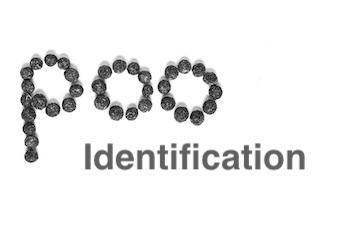

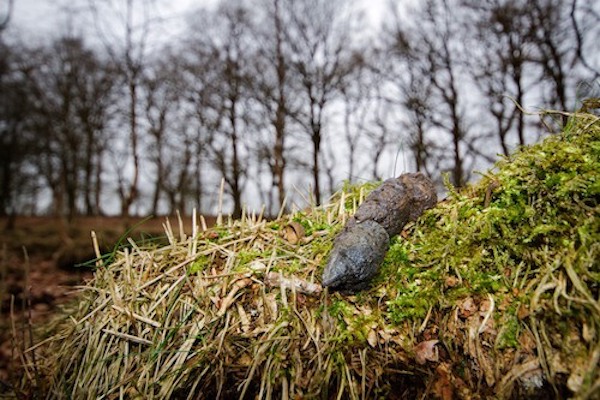
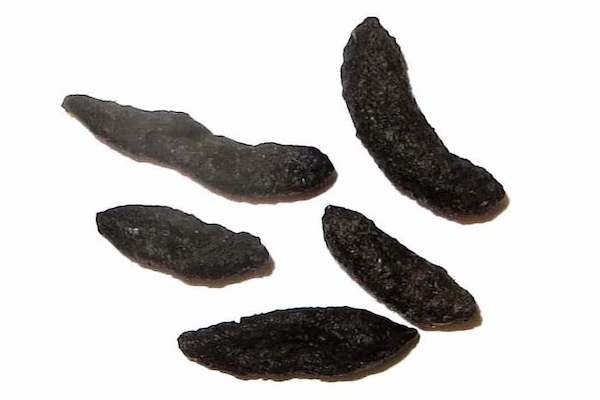
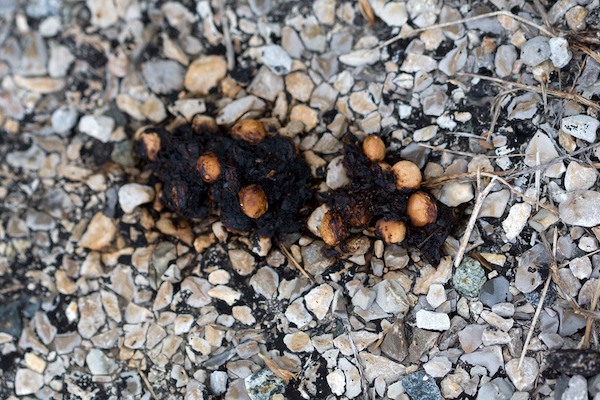
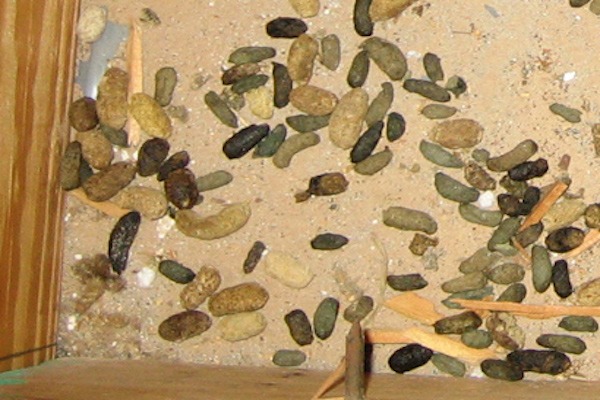
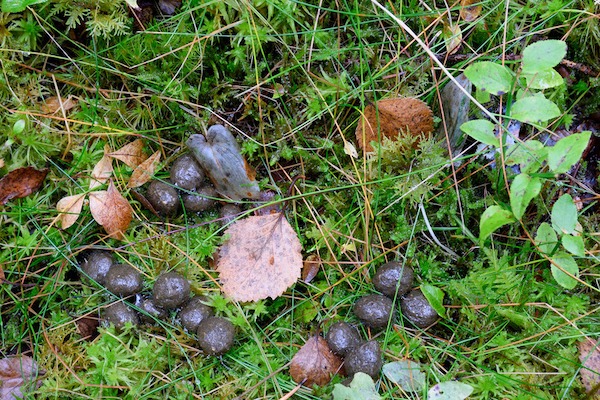
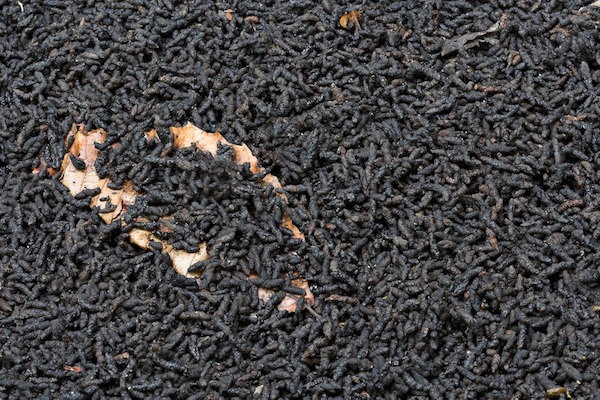
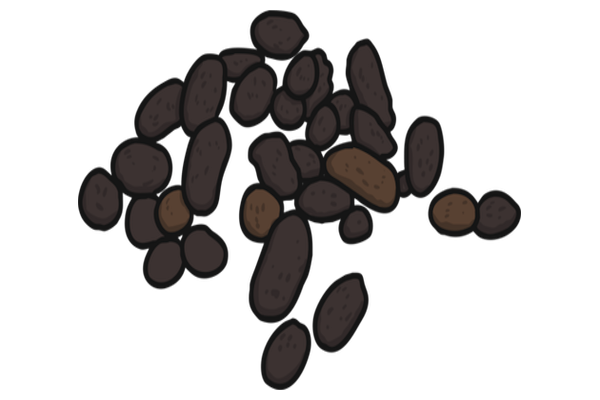
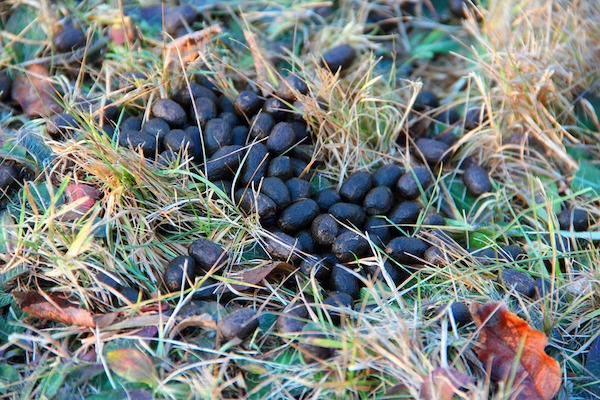
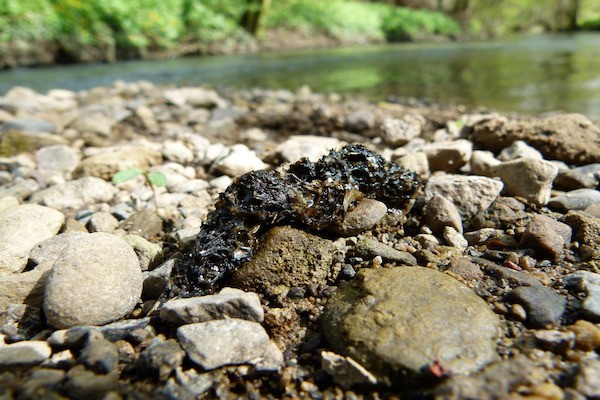
Omg I have a badger in my garden eek
All wilďlife are entitled to people’s gardens/plots, because it is us humans, that have over taken their land in the first place!
And don’t you dare kill them!
Well said!
Lovely!
It’s so difficult to work as hard as we do on a nice flower or vegetable garden and then have an unexpected intruder ruin it. My sympathies.
OMG we have got badgers in our garden!! So excited 🙂
How can anyone hate badgers? What have they done to you? You should feel privileged they visit your garen
I agree, Badgers are beautiful. Hope you feel guilty now, if not I hope he poos everywhere!
Looks like I have a rat – you can have that and I’ll have the badger!
We have deer visiting our garden at night and they eat the flowers
Pop is disgusting 😦 but deer are so cute
I think I have a rabbit visiting our hot tub getting warm. X
I leave out a saucer or two of cat food for the hedgehogs in my garden every night. This morning there is a large, soft, sloppy poo in the saucer! Looks a bit like badger poo, but can’t imagine any wild animal neatly depositing its poo in a saucer! Any ideas?
Hedgehog! Definitely. They do that to say thank you.
What animal leaves a round sausage poop